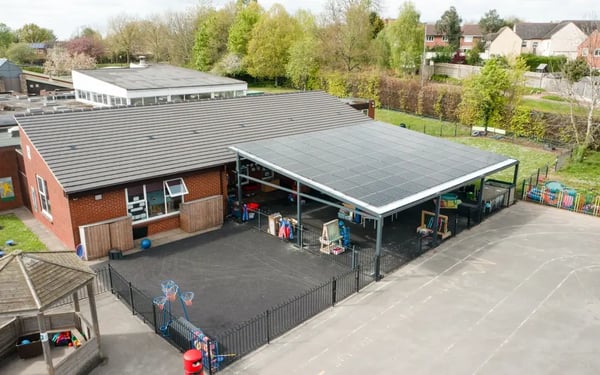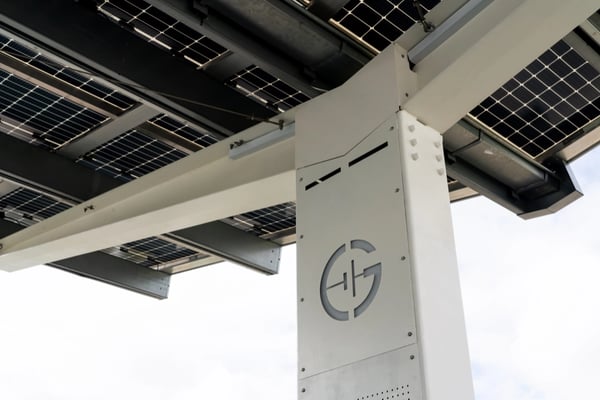Some good news: our simple checklist covers some of the essentials every professional school canopy design and installation project will need.
School Canopies 101
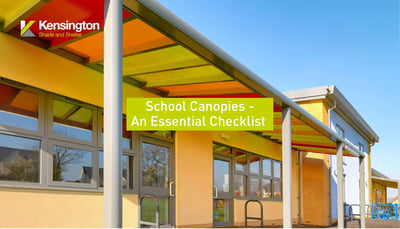 There’s a simple reason why a canopy is often used in an education setting: the right canopy solution can make the most of outside areas, allow outdoor learning, link buildings together and even turn unused spaces into a valuable asset.
There’s a simple reason why a canopy is often used in an education setting: the right canopy solution can make the most of outside areas, allow outdoor learning, link buildings together and even turn unused spaces into a valuable asset.
Professionals seeking to achieve the best possible project should, however, check for some minimum standards and features.
Clifford Huntley of Kensington Systems, a company trusted by architects and specifiers for shade and shelter expertise across 30 years, outlines his school canopy ‘must see’ considerations below.
School Canopies – A Checklist
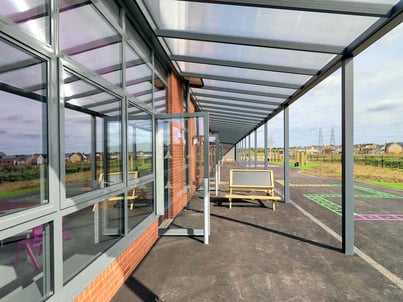 Non-Fragile Status: Ensure a school canopy is certified as ‘non-fragile’, as this is necessary due to HSE regulations designed to reduce the risk of injury if someone was to fall onto the canopy. Public sector organisations will often specify a non-fragility standard to protect users. (M)001: 2014 ‘Test for Non-Fragility of Profiled Sheeting Roofing Assemblies’ applies, however a specialist such as Kensington Systems (who only supply Class ‘A’ and ‘B’ canopies) will be able to advise if their products meet the highest Class ‘A’ rating.
Non-Fragile Status: Ensure a school canopy is certified as ‘non-fragile’, as this is necessary due to HSE regulations designed to reduce the risk of injury if someone was to fall onto the canopy. Public sector organisations will often specify a non-fragility standard to protect users. (M)001: 2014 ‘Test for Non-Fragility of Profiled Sheeting Roofing Assemblies’ applies, however a specialist such as Kensington Systems (who only supply Class ‘A’ and ‘B’ canopies) will be able to advise if their products meet the highest Class ‘A’ rating.
An overview…
Class ‘B’ non-fragile rating is achieved when the structure has sustained ‘minimal damage’ after multiple drop tests have been performed.
Class ‘A’ non-fragile rating is the highest rating and can only be achieved if the structure has sustained ‘no visible or significant damage’ after multiple drops.
A Class ‘C’ rating is achieved if the roof is damaged after only one impact.
Point Loading: To make sure the right foundation sizes are being used, a point loading calculation will take wind load, snow load and wind uplift factors into account as a single calculation.
Fixed or Free-Standing: The ease of siting a free-standing canopy can be a significant benefit as the structures can installed in almost any location on a site regardless of distance from a building.
UV Protection: Establish if a canopy offers the protection of ultraviolent exposure to ensure that it can genuinely considered to be bringing ‘the outdoors inside’. Otherwise, the usability of the structure during the hottest spells could be compromised. It’s worth keeping in mind that many primary schools have UV policies to protect young people who use their building.
Durability: Lacquered aluminium is a recommended material for manufacturers as it provides a strong, long-lasting and attractive canopy designed for the UK weather! Plan for a canopy to be in place for around 25 years and look for a ten year guarantee for the structure. Tip: ask a Kensington Systems specialist about using an extremely durable and rich-looking Structuretone coating.
Versatility: Work with an established specialist to discuss how additional versatility can be designed in to enhance the canopy project. For example, giving a school the option of a summer dining area or additional storage can be factored-in at an early stage. A popular solution? Enclosashade canopy enclosing blinds, which are heavy-duty blinds for external use with an designed-in window, still capable of resisting high wind speeds and offer superb versatility.
Appearance and roof angle: Again, requesting the help of an experienced school canopy expert can makes sure powder-coating, colours and design are used to make sure the canopy is attractive and a good fit for the setting. The canopy roof angle can be designed to align with the surrounding building for a professional, natural appearance.
Additional accessories, equipment and water management: A school canopy can’t be an ‘off the peg’ option as lighting, glazing, drainage, heating and side-infill should all be considered. In the case of drainage, consider whether surface run-off or downpipes into below-ground drainage will be needed.
Size and post positioning: Considering how the canopy will be used – ie, for dining, outdoor play or storage etc – means making sure the ideal size is chosen from the very start. Also bear in mind that the position of canopy posts in relation to fire exits should be considered at an early stage.
Entrance Canopies for Schools – A Note
A school entrance canopy has a particularly important role to play in terms of the appearance, weather-sheltering properties and durability of the structure. Speak to an expert about the sizes available: for example, a Kensington Systems canopy can cover a projection of up to six metres wide with no maximum length requirement.
Tip: A parapet-type facia can give a flat roof look, blending in with the school building and giving an appearance more in keeping with an entrance canopy, as well as allow space for lettering/ signage to be added.
UK Canopy Manufacturers vs Canopy Installers
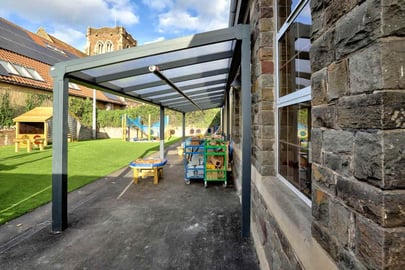 Consider whether a school canopy supplier is a reseller or manufacturer as this will establish if you’ll have the versatility of being able to customise a solution right from the factory floor.
Consider whether a school canopy supplier is a reseller or manufacturer as this will establish if you’ll have the versatility of being able to customise a solution right from the factory floor.
Kensington Systems manufacture, design and supply school canopy solutions with installation provided by a single contractor, managed by Kensington, who can also provide other products such as bike shelters and innovative commercial blinds.
Questions about school canopies? Contact Kensington Systems on +44 (0)117 958 9933 or the Kensington Systems contact form.

